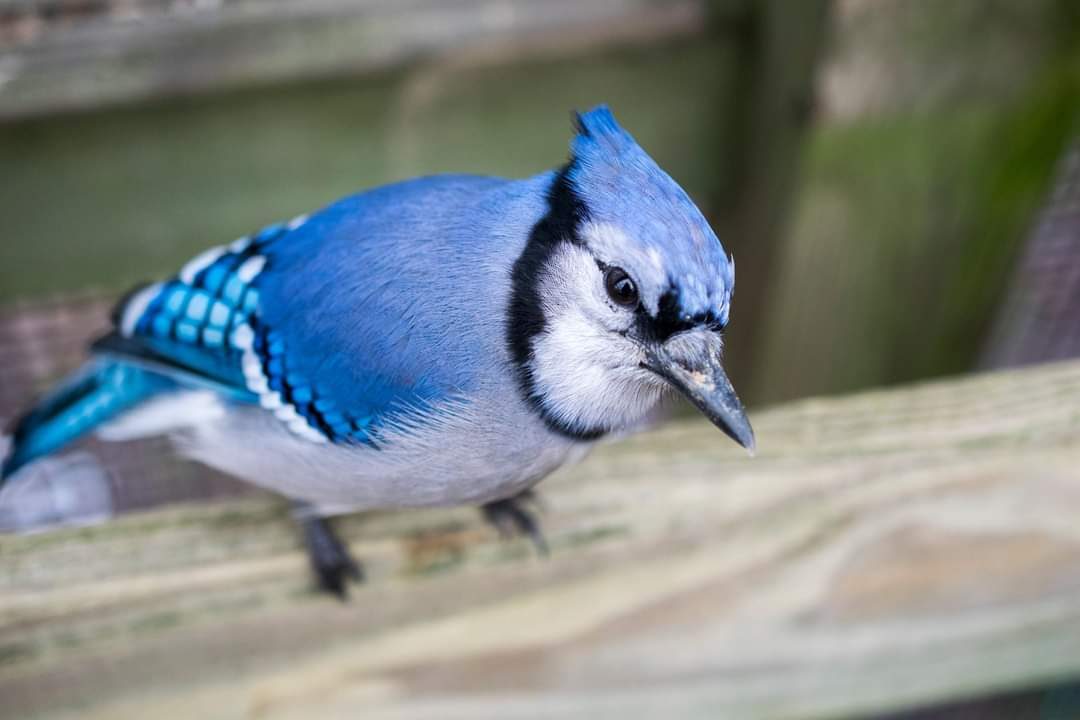What's in a blue jay feather? As it turns out, less color than you'd think. We asked an expert to explain why blue jay feathers aren't blue.

A Blue Jay Feather Isn’t Really Blue — Here’s Why

On This Page
Take a Closer Look at Blue Jays

There’s just something special about seeing a blue colored bird. Blue jays, bluebirds, indigo buntings — their feathers brighten feeders when they swoop in for a meal, and they stand out when they glide through the sky. Of them, the most common blue-looking bird is probably the blue jay. Many in the United States, birder or not, have heard its boisterous jaaay, jaaay! call. But despite their prevalence, there’s a fun blue jay fact not many know: a blue jay feather isn’t really blue. Here’s why.
Learn all about bird wings and flight feathers.
What Color Are Blue Jay Feathers?

How could a blue jay feather not be blue? When you see them, they’re clearly the correct color — and ‘blue’ is even in their name. Well, as it turns out, the coloration of blue jay feathers comes not from the birds themselves, but from the structure of their feathers and refractions of light.
American Bird Conservancy’s David Wiedenfeld explained that birds can produce black and brown colors because of melanin. Yellow and red, he says, come from feather pigments — birds’ feathers turn red or yellow as a result of their diet. But the color blue, interestingly enough, differs.
Blue jays do have melanin in their feathers, but that melanin is brown. It’s the way their feathers are made that makes a blue jay appear blue, and not brown. The physics of blue feathers, David says, can be complicated.
To better illustrate the idea, David compares a blue jay feather to a prism. “In a prism you have colored light, and it refracts and divides the spectrum up,” he says. “You get different colors coming out of different places. The way a bird’s feathers are, it absorbs all of the colors except for blue, which is refracted and comes back. It’s done with feather structure.”
Leucistic birds vs albino birds: learn the difference.
Other Birds That Aren’t Really Blue

As David explains, that fact applies to all blue birds. Bluebirds, indigo buntings, blue grosbeaks, lazuli buntings; their feathers all employ the same light-refraction process to appear blue. “All blues are a result of that,” he says. “There are no blue pigments in birds.”
David says that same feather structure accounts for certain birds, such as grackles and hummingbirds, appearing to ‘shine.’ He uses common grackles’ iridescent feathers as an example.
“Depending on how you see them in the light, they can show blue or golden-yellow,” he says. “If you see a grackle on a hill and you look down at it in the sun, it may look like it’s black with a golden color on it. If it then flies and lands above you, it’ll look blue instead of golden. You’re getting a different color from the light that’s reflecting from those structures.”
So, next time you see a blue jay, bluebird, or any blue bird, keep in mind the uniqueness of their feathers — and the complex process that makes them look blue.
Next, discover why some rare cardinals are yellow, not red.
About the Expert
As senior conservation scientist for American Bird Conservancy, David Wiedenfeld has worked on research pertaining to bird populations for decades. He served as director of research at the Sutton Avian Research Center, and he also served as head of the department of vertebrate ecology at the Charles Darwin Research Station in the Galapagos Islands. He holds a doctorate in biological science from Florida State University, and his favorite bird is the swallow-tailed kite.
Sources
- Cornell Lab of Ornithology, “Blue Jay: Overview“
- American Council on Science and Health, “Blue Birds Aren’t Blue, and This is How They Fool You“




















